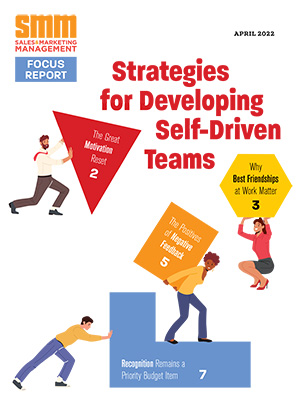Businesses across industries are focusing on refining strategies that drive both short- and long-term growth. One proven method for sustaining growth is a well-executed sales incentive program. When strategically designed, these programs can increase sales volume, profitability, and employee engagement. In this article, we’ll walk through how to implement an effective incentive program that delivers measurable results.
Why Sales Incentives Matter
Leaders in industries ranging from HVAC to technology have implemented incentive programs with us that align with long-term business goals. By motivating sales teams, distributors and partners through rewards, these programs foster competition and create a sense of urgency around key business objectives. For instance, partners who’ve followed our guidance have experienced an average 30% increase in sales.
One of the most effective models is the 20-60-20 rule, which rewards the top 20% of performers with premium incentives and encourages the middle 60% to aim higher. This model has proven effective in motivating teams, driving results, and fostering a culture of continuous improvement.
Increasing Sales Volume
The Challenge: A home-building manufacturer was struggling to maintain consistent order volume from its network of 2,000 contractors.
The Solution: An incentive program was implemented based on the 20-60-20 rule, paired with a digital rewards system to encourage participation and consistent performance. By offering rewards, partners were motivated to achieve higher sales targets.
The Results: The program led to a significant increase in order volume, with a notable rise in the number of top-performing participants.
Shaping Product Mix to Boost Profits
The Challenge: A global HVAC company wanted to shift the focus of sales from its standard ducted systems to ductless systems.
The Solution: An incentive program was created to reward sales reps with reloadable debit cards for each ductless unit sold. By aligning the reward system with the company’s goals, sales reps were encouraged to prioritize the desired product line over other options.
The Results: The company saw a 45% increase in the number of eligible units claimed. What began as a short-term initiative quickly turned into an ongoing seasonal event due to its success.
Using Digital Tools to Drive Engagement
The Challenge: A global lift truck manufacturer wanted to drive more sales through its dealer network and increase brand engagement.
The Solution: A mobile app-based incentive program was introduced, enabling dealers to receive notifications and track their progress. The app provided real-time data to help sales reps stay focused on achieving their goals.
The Results: App adoption increased by 205% and helped drive stronger engagement from dealers. The results were a significant boost to the company’s market presence and overall sales.
Rewarding Profitable Sales
The Challenge: A manufacturer of electrical controls wanted to prioritize higher-margin sales, but their incentive program wasn’t aligned with this goal.
The Solution: A tiered reward system was introduced that focused on rewarding higher-margin transactions. Sales teams were incentivized to push for these higher-value products, which contributed to greater profitability.
The Results: Over four years, this strategy led to both higher profits and improved market penetration, demonstrating that aligning incentives with profitability can produce long-term gains.
Empowering Sales Teams with Knowledge
The Challenge: A chemical manufacturer with over 1,700 sales reps noticed that reps lacked sufficient product knowledge needed to boost sales performance.
The Solution: An incentive program was integrated with online training modules and gamified elements, encouraging reps to enhance their knowledge while earning rewards for their learning progress.
The Results: The program not only improved product knowledge but also resulted in a measurable increase in sales volume, empowering reps to sell more effectively.
Using Data to Fine-Tune Strategies
The Challenge: A wholesaler needed better insights into customer behavior to improve sales strategies but had limited data from its distributors.
The Solution: An incentive program was developed to encourage distributors to share key data on customer preferences and buying behavior, providing the wholesaler with valuable insights to refine their approach.
The Results: The data collected allowed the wholesaler to refine its marketing strategy, leading to stronger sales and more targeted campaigns.
Building Sustainable Growth with Incentive Programs
Sales incentive programs are not just about rewarding short-term successes; they’re about fostering lasting growth and market share. By tailoring incentive strategies to the specific needs of an industry and using data to drive continuous improvement, businesses can build strong, sustainable growth. As leaders look toward 2025, companies that invest in data-driven incentive programs will be better positioned to stay ahead of the competition and achieve long-term success.





